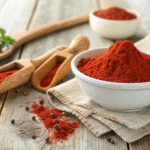
Phycocyanin Empowering Plant Protein Drinks, “Classic Blue” Hits
Say goodbye to the “live coral”
color of 2019 and say hello to the quiet “classic blue”!
After a year of eye-catching branding, gorgeous soft corals feature yellow, green, orange, and purple, and Pantone bids farewell to the living coral color known as the “Color of the Year” for 2019. This is a sweet and optimistic unsaturated pink, then they chose a more exciting and interesting marine color, and announced the “Classic Blue” as the annual fashion color of 2020.

According to Pantone, the hue is “timeless and long-lasting blue … simple and elegant.” The company chose it because of its “thought-provoking Pantone 19-4052” along with its nature which underlines the company’s foundation for reliability and stability. The natural product industry always seems to be one step ahead. In recent months, more products have appeared in different shades of blue, especially since autumn and winter 2019, and many can be spotted on the market. Brands are focusing on blue gravity, indicating that blue is expected to shine in the new year.

Source: Newhope

At the same time, GNT also released the 2020 food and beverage trend color “Shades of Aqua”. This is evident that blue will ignite a new trend this year.
2020 “Classic Blue” empowers plant protein drinks
The growth rate of the plant protein beverage market has been higher than the overall growth rate of the beverage industry. According to reliable intel sources, the fastest growth rate of various beverage sub-sectors since 2007 is plant protein beverages. In 2016, the plant protein beverage industry revenue was 121.72 billion Yuan, with a compound growth rate of 24.5% from 2007 to 2016, and its share in the entire beverage industry increased by 8.79 percentage points to 18.69%. In 2016, the plant protein beverage manufacturing market accounted for the largest proportion. People’s reflection on the health demands of the diet. It is expected that the industry market will further increase to 258.3 billion Yuan in 2020, accounting for 24.2% of the total size of the beverage manufacturing market, and still manage to be a major segment of the beverage manufacturing industry.

Phycocyanin (also known as spirulina protein), which is a new plant protein, is gradually getting attention from the public eye. It is extracted from spirulina in the depths of the ocean and is one of the few pigment proteins that occur naturally. It contains 8 essential amino acids. Modern scientific research shows that phycocyanin has a powerful anti-oxidant effect, which has important medical and healthcare functions including enhancing immunity, eliminating free radicals, fighting inflammation, improving anaemia, promoting blood cell regeneration, and suppressing cancer cells. The use of phycocyanin can bring convenient functional plant protein nutrition to the world in the form of plant-based beverages.
Phycocyanin, which is a plant protein pigment, is added to an aqueous solution to give a clear sky blue. Blue which can be described as simply elegant, brings about a touch of coolness. There are few blue drinks on the market. The beautiful and novel blue easily manipulates buyers to buy drinks due to its appearance, just like the hot blue Coke before.

There have been many phycocyanin-added drinks abroad including B-BLUE-FITNESS, which is a purified bioactive beverage that contains only purified water, phycocyanin, flavors, and sweeteners. Depura vita is a combination of fruits, vegetables and spirulina that work together to help balance the intestinal flora. Water + Blue Spirulina is a blend of lemon juice and blue spirulina (the ideal mixture of antioxidants and electrolytes). There are many other drinks in the market that have incorporated phycocyanin into their recipe.

.
These drinks have a low glycemic index and low- calorie content. Experiments have shown that phycocyanin is well-suited for a variety of applications ranging from candy to ice cream and beverages, and even alcoholic beverages.

For plant proteins, stability is a big problem, as is phycocyanin. If the stability problem can be overcome, both the plant protein and the natural blue phycocyanin will be on the market. As one of the few companies in the world capable of large-scale industrial production of phycocyanin, B & M has invested a lot of resources and manpower in improving the stability of phycocyanin. Thanks to the company’s accumulated experience in the field of active proteins, its scientific research team has continuously improved the production process of phycocyanin in long-term product production testing and has successfully developed the first heat-resistant type in the laboratory phase in 2019. Phycocyanin reagent is expected to hit the market any time this year. At the same time, the production cost of phycocyanin has also been greatly reduced, laying a broader foundation for the application of phycocyanin in food.

With the increase of people’s health awareness and the rise of “clean labels”, phycocyanin products continue to dominate the local and international market. It is expected that in the next decade, the world will set off a phycocyanin fever.






Recent Comments